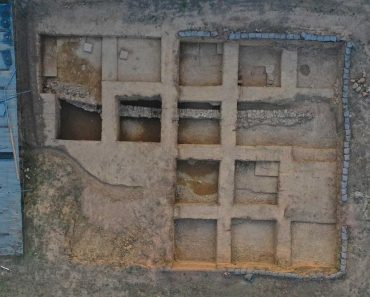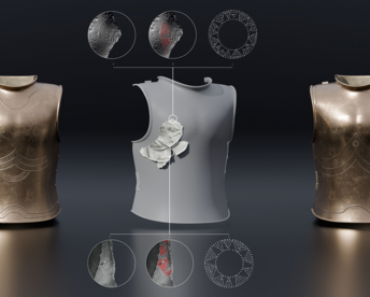By Ace Vincent
| Published
Throughout human history, archaeologists have uncovered mysterious objects that challenge our understanding of ancient civilizations. These artifacts seem to display knowledge, technology, or craftsmanship that shouldn’t have existed during their supposed time periods. From impossibly precise stonework to devices that hint at advanced scientific understanding, these discoveries continue to puzzle experts and fuel debates about our past.
Here is a list of 16 ancient artifacts that defy conventional historical timelines and leave researchers scratching their heads.
The Antikythera Mechanism

— Photo by Ale_Mi
This bronze contraption pulled from a Roman shipwreck in 1901 shouldn’t exist according to what we know about ancient Greek technology. The device contains dozens of interlocking gears that could predict eclipses, track planetary movements, and calculate the timing of the Olympic Games. Scientists didn’t think such sophisticated mechanical computers existed until the 14th century — yet this one dates back to around 100 BCE.
Baghdad Battery

Found in Iraq in 1936, this clay jar contains a copper cylinder and an iron rod that could theoretically generate electrical current when filled with an acidic solution. The artifact dates to around 250 BCE — roughly 2,000 years before Alessandro Volta invented the first battery. While some archaeologists argue it was used for electroplating jewelry, others remain skeptical about its true purpose.
The London Hammer

This ordinary-looking hammer embedded in 400-million-year-old rock has sparked decades of controversy. Discovered in Texas in 1936, the tool appears to be made of iron with a wooden handle, yet it’s supposedly encased in rock that predates the existence of humans by hundreds of millions of years. Mainstream scientists argue the rock formation occurred much more recently than initially believed — though the debate continues.
Piri Reis Map

Created by Ottoman admiral Piri Reis in 1513, this world map shows Antarctica’s coastline with remarkable accuracy. The strange part? Antarctica wasn’t officially discovered until 1820, and its ice-free coastline hasn’t been visible for thousands of years. The map also depicts South America and Africa with surprising precision for its time — using sources that supposedly no longer existed.
The Dropa Stones

These 12,000-year-old stone discs allegedly found in a Chinese cave contain tiny hieroglyphic-like markings that some claim tell the story of ancient space travelers. Each disc is about nine inches wide with a hollow center, and the spiral markings supposedly describe how the ‘Dropa’ came from the stars and crash-landed on Earth. Most mainstream archaeologists dismiss these claims as elaborate hoaxes — though the mystery persists.
Roman Dodecahedra

These small bronze objects with twelve faces and punctures of varying sizes have been found across Roman sites, yet no ancient text mentions their purpose. Dating from the 2nd to 4th centuries CE, over 100 of these mysterious artifacts have been discovered — each carefully crafted with precise geometric proportions. Theories about their use range from surveying instruments to religious objects, but nobody knows for certain.
The Ica Stones

Thousands of carved stones allegedly discovered in Peru depict humans alongside dinosaurs, performing advanced surgical procedures, and using telescopes. While some claim these prove ancient humans coexisted with dinosaurs, most scientists consider them modern forgeries. The stones first appeared in the 1960s — conveniently coinciding with increased interest in ancient astronaut theories.
Sacsayhuamán Walls

Located near Cusco, Peru, these massive stone walls consist of blocks weighing up to 200 tons that fit together so perfectly you can’t slide a piece of paper between them. The Inca allegedly built these walls without metal tools, wheels, or draft animals — yet achieved precision that modern engineers struggle to replicate. The blocks are cut at impossible angles and transported from quarries miles away.
The Coso Artifact

This strange object, found inside a 500,000-year-old rock in California, appeared to contain a spark plug or similar mechanical device. When X-rayed in 1961, it revealed what looked like a modern electrical component encased in ancient stone. Later analysis suggested it was actually a 1920s spark plug that had become encrusted with minerals — making it appear much older than it actually was.
Grooved Spheres

These nearly perfect metallic spheres with parallel grooves around their circumference have been found in South African mines dating back 2.8 billion years. The spheres are made of a nickel-steel alloy that doesn’t occur naturally — and their precise grooves suggest artificial creation. Some researchers argue they’re natural pyrophyllite formations, while others insist they show evidence of ancient manufacturing.
The Aiud Wedge

This aluminum wedge discovered in Romania in 1974 alongside mastodon bones has puzzled researchers for decades. Aluminum requires sophisticated electrolytic processes to produce technology that didn’t exist until the 19th century. The wedge appears to be about 250,000 years old based on its geological context, though aluminum production is a distinctly modern achievement.
Crystal Skulls

These life-sized human skulls carved from quartz crystal were supposedly created by ancient Mesoamerican civilizations. The skulls display impossible precision and show no tool marks despite being carved from one of the hardest minerals on Earth. Modern analysis revealed they were actually created with 20th-century rotary tools. This debunked claims of ancient origin entirely.
The Kensington Runestone

— Photo by [email protected]
Found in Minnesota in 1898, this stone slab contains runic inscriptions describing a 14th-century Norse expedition to North America. The stone’s discovery predates widespread knowledge of Viking exploration by centuries, lending credibility to its authenticity. However, linguistic analysis reveals the runes contain modern Swedish elements that wouldn’t have existed in medieval times.
Nazca Lines

These enormous geoglyphs etched into the Peruvian desert create images only visible from the air, including animals, plants, and geometric patterns. Created by the Nazca culture between 500 BCE and 500 CE, these lines raise questions about how ancient people could design such massive aerial artworks without flight capability. The lines remain perfectly preserved due to the desert’s dry climate.
The Tecaxic-Calixtlahuaca Head

This small terracotta head found in Mexico before Columbus’s arrival appears to depict a Roman or Mediterranean person, complete with a beard and European features. The artifact was discovered in a sealed pre-Columbian layer, suggesting contact between Old and New World civilizations before 1492. Critics argue the head was planted at the site or represents a misidentified indigenous artifact.
Quimbaya Airplanes

These small gold figurines from Colombia, dating to around 1000 CE, resemble modern aircraft more than birds or insects. The objects have triangular wings, vertical tail fins, and streamlined bodies that mirror aerodynamic principles. While archaeologists classify them as stylized animals or insects, their resemblance to aircraft design has sparked speculation about ancient flight knowledge.
Echoes of the Unknown

— Photo by [email protected]
These mysterious artifacts remind us that human history contains more questions than answers. Whether they represent lost technologies, misunderstood natural phenomena, or elaborate hoaxes, they challenge our assumptions about ancient capabilities. Each discovery forces us to reconsider what we think we know about our ancestors and their relationship with the world around them. The truth behind these objects may remain elusive, but they continue to inspire wonder and push the boundaries of historical investigation.
More from Go2Tutors!

Like Go2Tutors’s content? Follow us on MSN.







